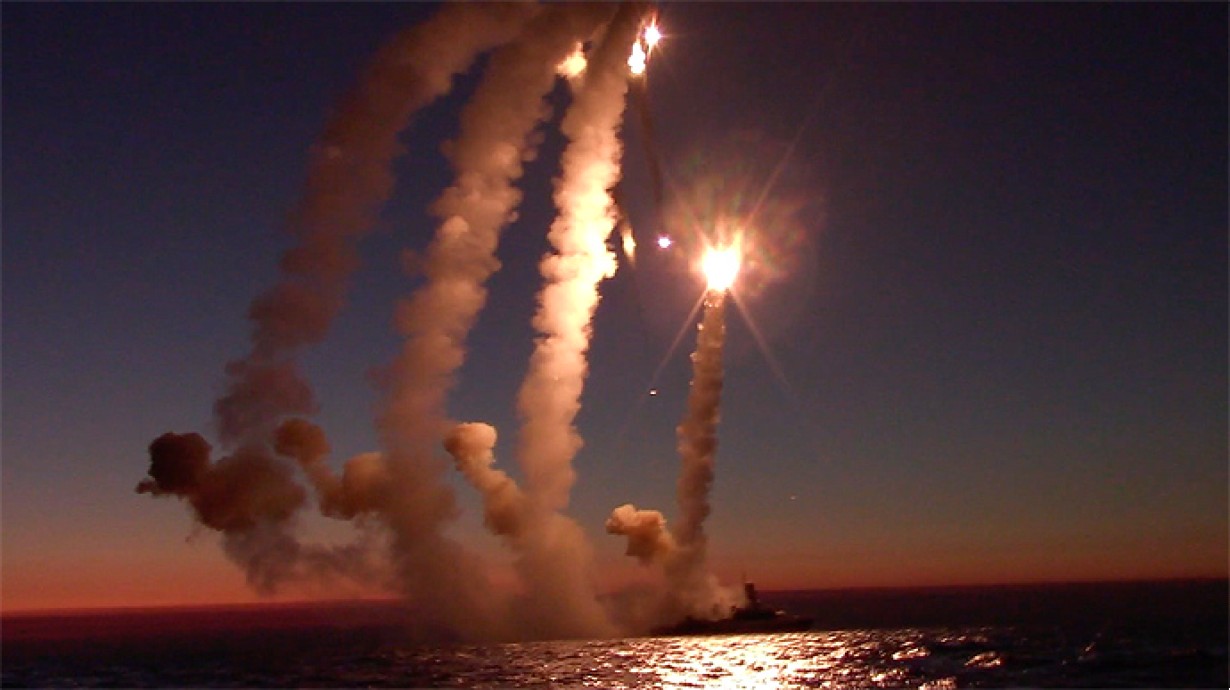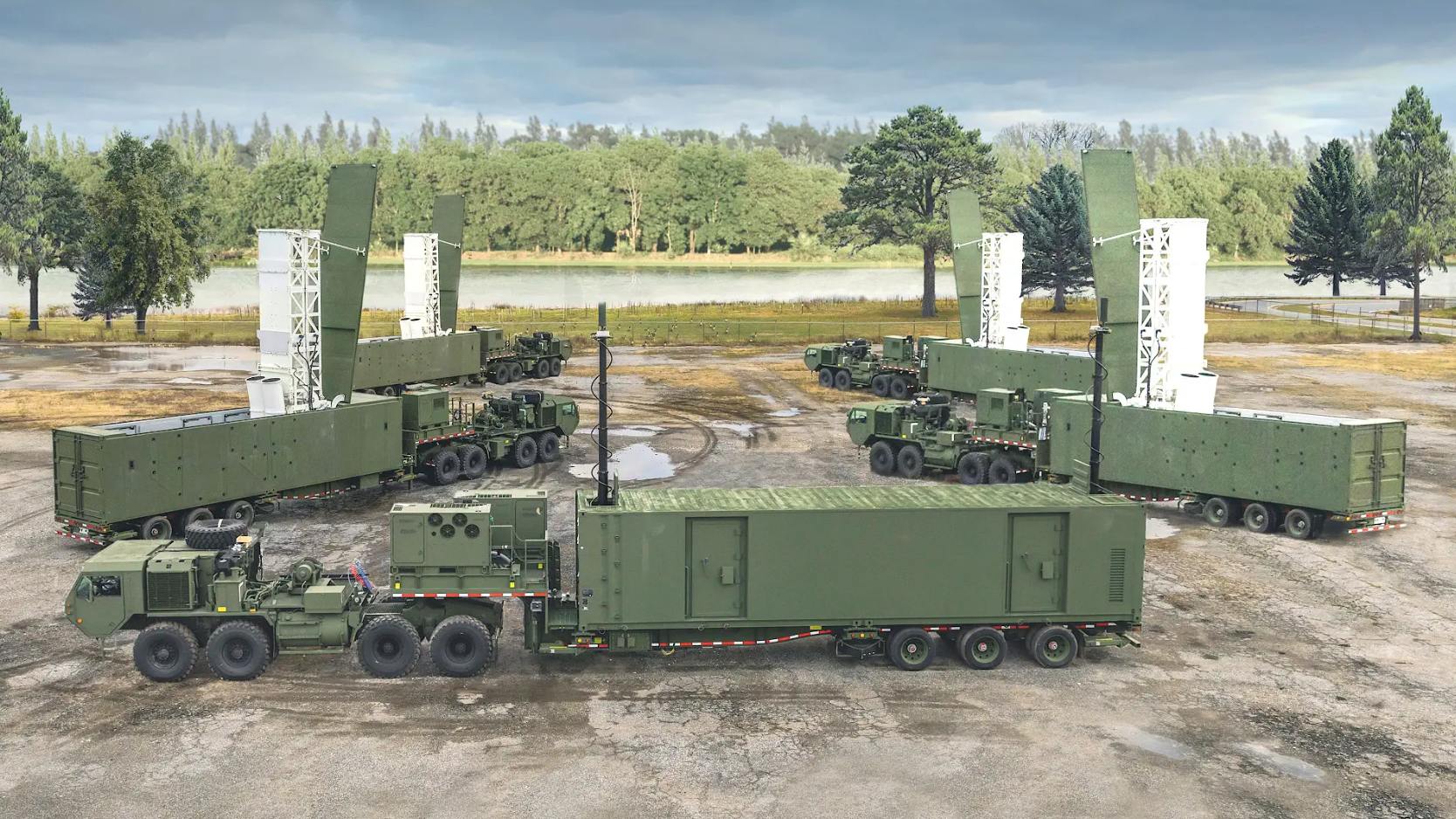Russia considered developing land-launched versions of its sea-fired Kalibr cruise missiles in February 2019 in retaliation to the US attempts to introduce land-based versions of the naval missiles like the Tomahawk and SM-6 Surface-to-Air Missile (SAM).
With 150 Sorties & 900 Precision Strikes Daily, US Navy Capable Of Deflating China – Top Commander
The US has been trying to introduce one of these systems, the Typhon, since 2017 in Europe, too, according to Russia.
This drove Moscow to field the 9M729 Novator cruise missile, which led to both sides accusing the other of violating the Intermediate-Range Nuclear Forces (INF) Treaty, which finally resulted in its collapse in August 2019.
With Russia believing the US wanted an excuse to quit the INF to be able to field these missiles, the military leadership in Moscow advised President Vladimir Putin to permit research into developing land-fired variants of the Kalibr missile, according to a report in Kommersant.
The Kalibr is currently the weapon of choice in Russia’s periodic missile barrages on Kyiv. It is launched from Russian warships in the Black Sea, alongside the air-launched Kh-101, surface-to-surface ballistic missile Iskander and Geranium-2 kamikaze drones simultaneously on civilian-military targets.
The Tomahawk and the SM-6 are a part of the Typhon system, where the missiles fired from the Mk.41 universal launchers have been repurposed for hitting land targets.
The Tomahawk version of the Typhon, also called the Mid-Range Capability (MRC) missile, was test-fired earlier this month. The naval version of the land-fired Tomahawk was unveiled this week.

Bridging The Range Gap
The SM-6 version of the Typhon was meanwhile “rehearsed” in its road-mobile form in September 2022 under the US European Command, EurAsian Times reported. The rehearsal showed containers on articulated trucks claimed to be carrying the SM-6.
The MRC/Typhon system bridges the range gap between two under-development missiles – the 482-kilometer range Precision Strike Missile (PrSM) and the 2776-kilometer range of the US Army’s hypersonic Long-Range Hypersonic Weapon (LRHW).
In other words, it requires missiles to reach targets up to 1,800 km away.
Interestingly, the Tomahawk and the Naval Strike Missile (NSM) – of the Navy/Marine Corps Expeditionary Ship Interdiction System (NMESIS) – is part of a larger US Marine Corps (USMC) island-hopping strategy of firing anti-ship missiles on Chinese warships from friendly nations’ islands in the South and East China Seas.
The NMESIS, too, undertook its third test-firing earlier this month.
‘US Exploiting Arms Control Treaty Collapse’
Russian military expert Alexander Ermakov, quoted in the Kommersant report, also believes the obsolete Tomahawk has been introduced to hit mainland China, besides Chinese naval shipping. Ermakov refers to official US military statements and reports in defense news outlets.
A report in The WarZone cites the US military concept of being able to rapidly move across the islands “in a future large-scale conflict in the Pacific against China.” Thus, the choice of the Joint Light Tactical Vehicle (JLTV) to carry the Tomahawk launchers.
Ermakov, however, assesses that the choice of the Tomahawk missile for the anti-shipping role is suspicious and believes that the US has escalatory intentions in hitting Chinese land targets.
“Neither official statements nor analytical materials explain why the Tomahawk was chosen for the anti-ship system.
“For an anti-ship missile, the Tomahawk is obsolete, but its surviving ground-attack capabilities may be the true reason for the Marine Corps to purchase such systems. By deploying off the Chinese coast under the guise of ‘defensive’ anti-ship weapons, the Marine Corps will receive stable means to attack Chinese territory,” Ermakov alleges.
But the Tomahawks also threaten Russia, according to Ermakov, as “one cannot rule out their future deployment in Europe or their sale to American allies under the guise of anti-ship (missiles).”
As mentioned earlier, the fact that the SM-6 version of the Typhon was tested under the European Command lends some credence to Ermakov’s claims.

This led Russian Defense Minister Sergei Shoigu to propose to Putin in February 2019 – when it was clear that the INF would fall apart – to start research and development to fire sea-based Kalibr missiles and medium and short-range hypersonic missiles from land.
According to the Kommersant report, the proposal’s fate is unknown. But it added that the US wanted a pretext to introduce land-attack missile systems with prohibited ranges and thus exited the INF Treaty, that freed up its hands.
The INF Treaty
The 1987 INF Treaty between the US and the former Union of Soviet Socialists Republics (USSR or the Soviet Union) banned the development and deployment of nuclear and conventional, cruise, and ballistic missiles with ranges of 500 to 5,000 kilometers.
The two countries subsequently destroyed a total of 2,692 short, medium, and intermediate-range missiles by the treaty’s implementation deadline of June 1, 1991, according to the Arms Control Association (ACA).
Following mutual accusations of violating the INF, the US exited the treaty under the then-President Donald Trump administration in August 2019.
- The author can be reached at satamp@gmail.com
- Follow EurAsian Times on Google News




